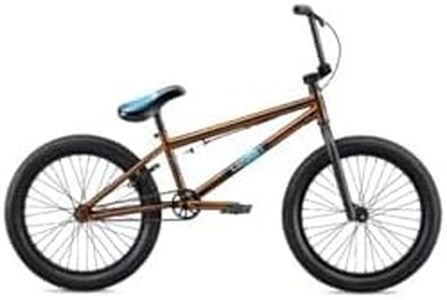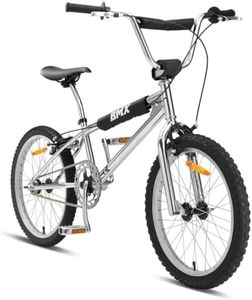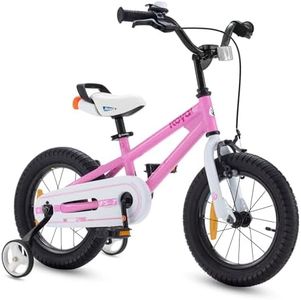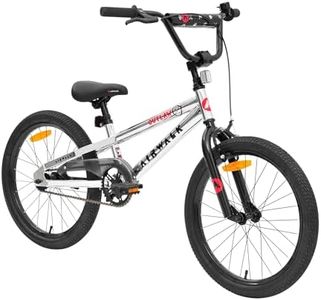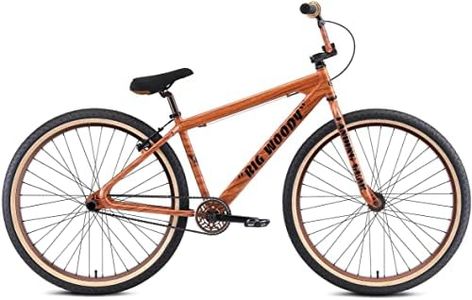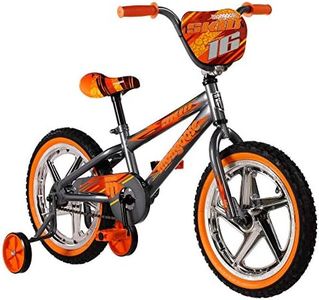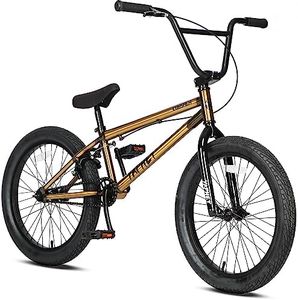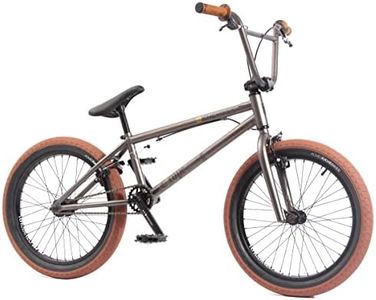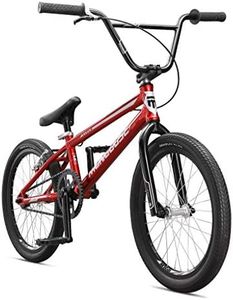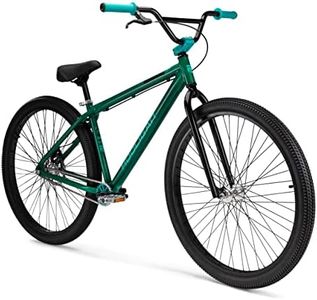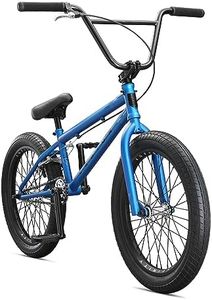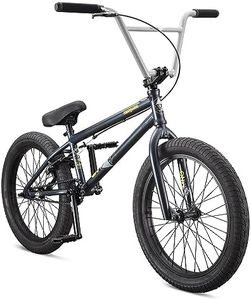We Use CookiesWe use cookies to enhance the security, performance,
functionality and for analytical and promotional activities. By continuing to browse this site you
are agreeing to our privacy policy
10 Best Bmx Bikes
From leading brands and best sellers available on the web.Buying Guide for the Best Bmx Bikes
Choosing a BMX bike can be an exciting journey, as these bikes are designed for tricks, stunts, and racing. Before you pick one, it helps to know what type of riding you’ll mostly do—street, park, dirt, flatland, or racing—because different BMX bikes are optimized for each style. Understanding the key features will help you find a ride that feels right for your skills, size, and aspirations.Frame MaterialThe frame of a BMX bike is usually made from steel (either hi-tensile or chromoly) or aluminum. Steel frames are sturdy and often cheaper, with hi-tensile being heavier and suited for beginners or casual riding, while chromoly steel is lighter and stronger, which appeals to riders looking for more performance and durability. Aluminum frames are light and rust-resistant, often used in BMX racing for faster acceleration. If you’re planning to do more advanced tricks or want a lighter, longer-lasting bike, look for chromoly or aluminum; for learning the basics or casual riding, hi-tensile steel may be enough.
Top Tube LengthThe top tube is the bar that runs horizontally between the seat and handlebars, and its length is crucial for comfort and control. BMX bikes have shorter top tubes (around 20 inches) for smaller riders or technical tricks, while longer tubes (over 21 inches) impart more stability and are great for taller riders or those focusing on racing and dirt jumping. Your height and riding style should guide you: smaller riders or those into park/street will likely prefer shorter tubes, while taller riders or racers should look for longer lengths.
Wheel SizeMost BMX bikes use 20-inch wheels, the standard for trick and freestyle bikes because they provide excellent maneuverability. However, younger or smaller riders might choose 18-inch or even 16-inch wheels for easier handling, while certain racing and cruiser models use 24-inch wheels for added speed and comfort. Your age, size, and how you intend to ride should dictate your choice—stick to 20-inch if you’re a typical teen or adult doing freestyle or tricks; go smaller or larger depending on your needs.
Brake TypeBMX bikes often come with U-brakes, sometimes just at the rear, or no brakes at all for certain trick riders. U-brakes provide good stopping power without interfering with stunts, while race bikes might use linear-pull (V-brakes) for more effective braking. Riders focusing on technical tricks often remove brakes altogether. You should consider where and how you plan to ride—if you value safety and control, especially as a beginner or racer, opt for strong, reliable brakes; if you’re more advanced and want to perform bar spins and tricks, fewer or detachable brake options may suit you.
WeightThe weight of a BMX bike affects how easy it is to lift, jump, and control. Lighter bikes make it easier to perform tricks but can be more expensive, while heavier bikes may be tougher for technical styles but are often more affordable and durable for beginners. When choosing, think about your own strength and riding goals—lighter bikes are best for those aiming at tricks and competitions; heavier, solid builds are fine for learning or rough play.
Tire TypeTires on BMX bikes vary in width and tread, which impacts grip and control. Street and park tires are usually narrower and with smoother tread for less rolling resistance on concrete, while dirt tires are wider with deeper treads for better traction on loose surfaces. Choose tires based on where you’ll ride most: go for smoother tires if you’ll be at skateparks or on pavement, and knobby ones if you’ll be riding on dirt or mixed terrain.
Drivetrain (Gearing)BMX bikes use a relatively simple gear setup, usually with a single gear ratio. Smaller front chainrings (sprockets) and rear cogs are common for freestyle riding, giving more ground clearance and allowing easier spins and tricks, while racers might opt for larger gears to increase speed. Your typical environment and objectives should guide gearing—simple, small-gear setups are ideal for tricks and technical riding; if speed is your focus, consider a gear ratio with more teeth.
